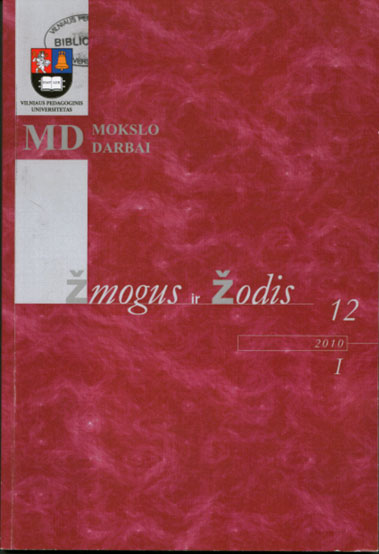Dvibalsių ie, uo vienbalsinimo tendencijos periferinėse Varanavo šnektose
Monophthongization tendencies of the diphthongs ie and uo in the peripheral subdialects of Varanavas
Author(s): Nijolė TuomienėSubject(s): Language and Literature Studies
Published by: Vytauto Didžiojo Universitetas
Keywords: peripheral subdialect; monophthongization of diphthongs; language contact; change of vowel quality and quantity; pitch levelling.
Summary/Abstract: The article presents a synchronic analysis of monophthongization of the diphthongs ie and uo in the peripheral subdialects of South High Lithuanian. The subdialects are spoken in Varanavas district of Gardinas region in Belarus. Findings of the analysis are compared with the data from other subdialects of South High Lithuanian which are spoken in the main area of the language. Monophthongization of the diphthongs ie and uo is a relatively recent phenomenon observed in those subdialects which get in contact with eastern Slavic languages. As a consequence of language contact and dialect internal changes, long vowels become shorter which, in its turn, affects certain qualitative features of the vowels. In the Lithuanian-spoken areas of Belarus, this process has been much more intense than elsewhere. Moreover, monophthongization of the diphthongs ie and uo has become a regular change in the subdialects of Varanavas district. The pronunciation of the full form of the diphthongs is seldom retained by the speakers of the older generation, while other speakers monophthongize both stressed and unstressed diphthongs almost systematically. The process of Slavicization in the eastern and western parts of Varanavas district has been rather uneven. Thus the outcomes of monophthongization also vary. While in the eastern part of the district the Lithuanian language has become less compact and started disintegrating, subdialects surviving in the western part often retain the full form of ie and uo. The newly emerging vowels in the eastern part are more tense than in the western part – pronounced as i·, u· in both stressed and unstressed positions. The discussed subdialects are also characterized by pitch levelling.
Journal: Žmogus ir žodis
- Issue Year: 12/2010
- Issue No: 1
- Page Range: 62-67
- Page Count: 67
- Language: Lithuanian

